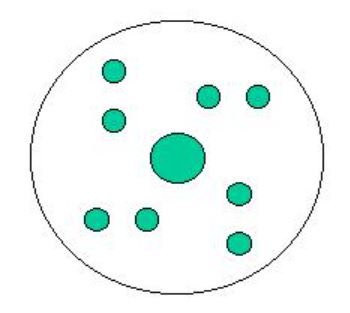Advanced Fuels
Monopropellants, Alternative Hydrocarbons, and High Energy Density Materials
Presentation to the Ninth Annual NASA-JPL Advanced Space Propulsion Research Workshop and Conference Jet Propulsion Laboratory Pasadena, CA
Bryan Palaszewski
NASA Lewis Research Center
Cleveland, OH
March 11-13, 1998
Alternative Hydrocarbons
Introduction
- Advanced Fuels and the National team
- Monopropellants
- Small Business Innovation Research (SBIR)
- Testing of Alternative Hydrocarbons
- Analyses and testing of atomic propellants with solid hydrogen and other solid cryogens
SBIR Phase II – Orbital Technologies Corporation (Orbitec) and SRI
- SBIR Phase II awarded – Dinitramine monopropellants
- Orbital Technologies Corp. (Madison, WI) and SRI (Menlo Park, CA) team
- Performance potential – 270 to 300 seconds specific impulse, density of 1.9 g/cm3
- Phase I complete, and Phase II will demonstrate combustion and safety aspects of fuels
SBIR Phase I – Argonide Corporation
- SBIR Phase I awarded – Nanophase powders of metals, using exploded wire formation process
- Argonide Corporation (Sanford, FL)
- Performance potential – density increases over RP-1, potential for reduced gellant masses, and reduced agglomeration on nozzle surfaces
- Phase I initiated, commercial potential is excellent (explosives, etc.)
Fuel Combustion Testing
- Alternative hydrocarbons are being formulated for NASA by USAF Research Laboratory (Edwards, CA)
- Bi cyclo propylidene
- Spiro pentane
- Tri propargyl amine
- 10 lbm samples of each propellant will be produced
- Propellants would be used with O2 as oxidizer
- Performance potential – additional 10 – 15 seconds specific impulse over O2 /RP-1 (310 to 315 s versus 300 s for O2 /RP-1)
- After formulation and production is completed, small scale rocket engine testing will determine combustion performance
Advanced Space Transportation Program – Advanced Fuels
Applications, and Research Directions
- Advanced Space Transportation Program calls for Advanced Fuels
- All NASA Enterprises can derive benefit from Advanced Fuels
- Promising applications are:
- Future rocket powered Reusable Launch Vehicles (alternative hydrocarbons, high energy density materials)
- Monopropellants for launch vehicles (non-toxic, higher energy than hydrazine)
- Two State to Orbit (TSTO) airbreathing vehicles
- Upper stages, and many others
- Research directions include monopropellants, alternative hydrocarbons, high energy density propellants, gelled hydrogen, etc.
The National Team
- National team assembled
- NASA MSFC /Lewis – joint leadership, rocket testing
- NASA Lewis – cryogenic experiments, rocket testing
- USAF Research Laboratory – coordination with their extensive HEDM research program
- Jet Propulsion Laboratory – feed, engine systems design
- NASA Ames – molecular modeling
- U.S. Army and Navy
- University partners – drawn from USAF RL recommendations
- Industry partners – as funding permits
- Able to draw upon extensive National resources with the team concept
Links to Related NASA Lewis Projects
- Propellant densification – for Reusable Launch Vehicles
- with NASA MSFC, testing, planning for RLV underway
- Non-toxic monopropellants – for satellite apogee propulsion, OMS, RCS
- Many industry, NASA partners
- Oxygen/Ethanol – APU design and testing
- with NASA JSC
- Solid hydrogen /cryogen testing – for high energy density propellant feed systems
- with USAF Research Laboratory
High Energy Density Propellants
Vision
- Increased specific impulse with additives: O2/H2 baseline
- Carbon atoms – 49 s
- Boron atoms – 31 s
- Aluminum atoms – 27 s
- Hydrogen atoms – 19 s
- Additives carried in solid H2 and/or other solid cryogenic particles
- Increase propellant and vehicle density over O2 /H2
- More compact vehicles
- Improved payload delivery for future launch vehicles
- Predictions based on analyses and experiments of NASA and USAF
Proposed Experiments
- Preliminary analyses show solid particles in cryogenic carrier fluid can carry HEDM additives to ‘conventional’ rocket combustion chamber
- Form small solid H2 (and/or other solid cryogens) in liquid helium
- Cryogenic particles carry HEDM additives
- Determine flow properties of solid cryogenic particles in liquid cryogenic carrier
- Experiments are for observation and documentation of the solid-liquid interactions and flow properties
- Small scale experiments, to be conducted at NASA K-Site and Supplemental Multilayer Insulation Research Facility (SMIRF)
Plans
- Map of particle formation in liquid cryogens for design of HEDM propellant feed systems
- Determine viability of liquid-particle cryogenic feed techniques
- Experiments will help guide design of feed system components, needed for operational used of HEDM propellants
Launch Vehicle Performance with Solid Particle Feed Systems for Atomic Propellants
- Systems studies to illustrate different propellant feed system effects of HEDM performance
- Major options being investigated –
- Al, B, C, H atoms in solid H2, with liquid helium as carrier
- Same atoms with solid neon and argon particles, and liquid hydrogen as carrier
- Monopropellant and bipropellant options
- Vehicle sizing, density, and rocket specific impulse
- Work will be presented at AIAA Joint Propulsion Conference, July 1998
Advanced Space Transportation Program
Other Applications
Other Transportation related areas:
- Alternative high density hydrocarbons for upper stages
- Endothermic fuels for air-breathing propulsion
- Gelled hydrogen for HEDS, RLVs
- Non-toxic propellants for Mars Ascent
- Monopropellants for upper stages, OMS, RCS
Navy Monopropellant
- Cyclodextrin Nitrate
- Performance potential – 240 to 280 seconds specific impulse, very high density near 2.0 g/cm3
- John Consaga is the Naval Surface Warfare Center (Indian Head, MD) contact
- Flashback potential to be tested, for safe monopropellant operation
- Cost of testing at Penn State University is being negotiated with NASA and the U.S. Navy funding
Conclusions
- Five major technologies being investigated –
- Monopropellants
- Alternative hydrocarbons
- Gelled hydrogen
- Metallized gelled propellants
- High energy density materials
- Systems studies show excellent advantages of monopropellants, alternative hydrocarbons, gelled propellants, and HEDM
- Small scale experiments show promise
- Dinitramine monopropellants, with Orbitec /SRI
- Nanophase particles, with Argonide
- Formulation of alternative hydrocarbons (USAF Research Laboratory / NASA)
- Manifold possibilities for future propellants
- Planning continues under NASA Advanced Space Transportation Program for additional experiments, search for best technologies, etc

